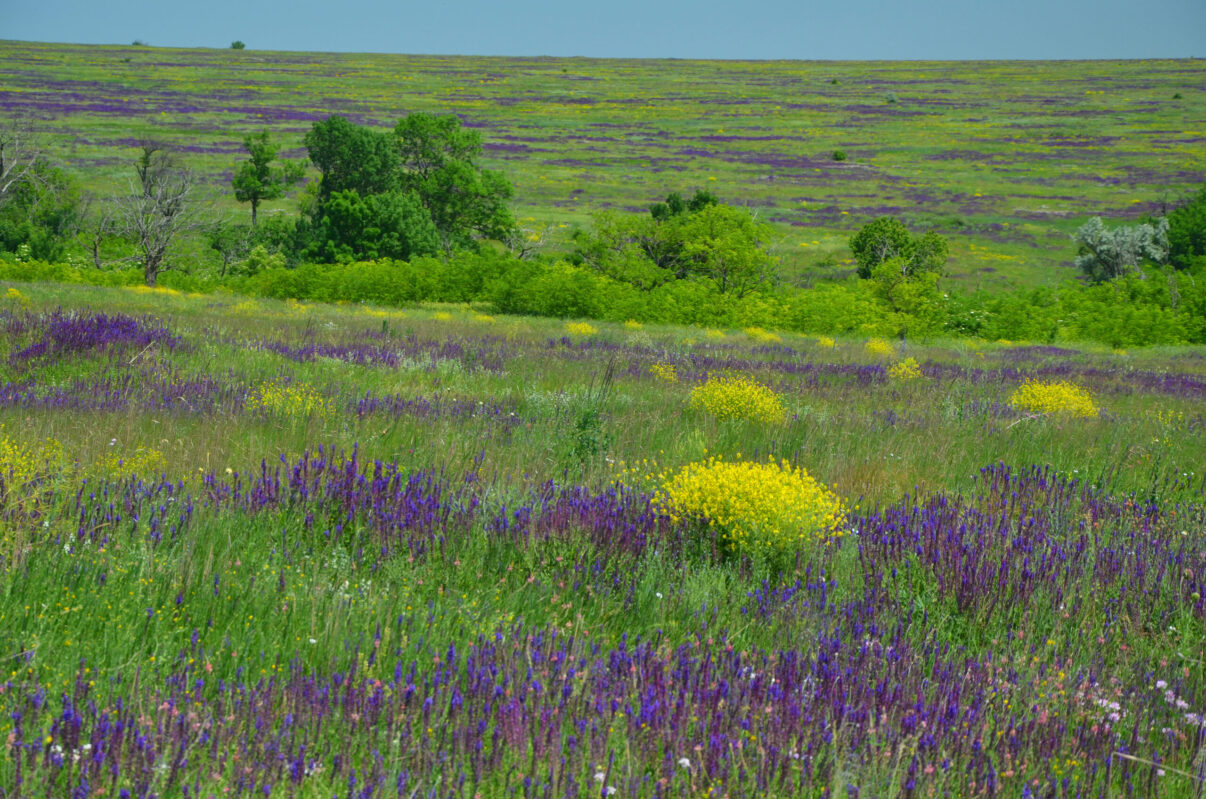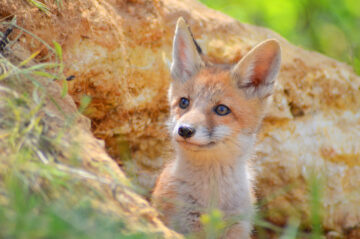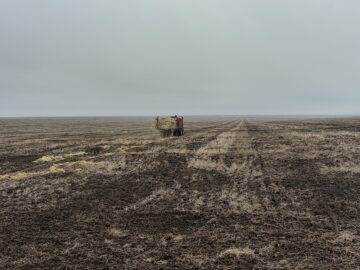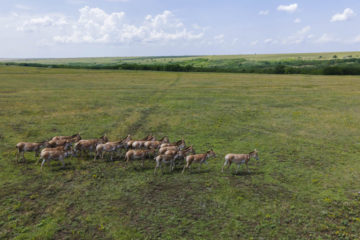Measures to restore damaged areas of the Tarutino Steppe are part of a vision to establish a wilder local landscape governed more by natural processes.

Steppe recovery

As part of the extended Danube Delta rewilding area, the 5200-hectare Tarutino Steppe is one of the very few remaining areas of steppe in Ukraine and Europe. Characterised by its expansive grassy plains (like all steppe areas), it is home to a wide range of rare flora and fauna. The Tarutino Steppe Landscape Sanctuary, which was established in 2012 to protect the area’s wildlife, is included in the official list of European Emerald Network sites.
In 2016 the reserve was damaged by illegal ploughing, with around 1300 hectares (ha) affected before a national and international campaign halted the destruction. While the damaged steppe areas have undergone a slow natural restoration process since then, the Rewilding Ukraine team – in collaboration with the Centre for Regional Studies and the Frumushika-Nova Agroecological and Recreation Cluster – have started work to actively restore and accelerate the recovery of this precious habitat, with support from the Ukrainian government and the EU.
Part of the process

Restoring the damaged steppe is a multi-stage process, developed by specialists at the Askania-Nova Biosphere Reserve (a 300 square-kilometre steppe reserve in southern Ukraine). During the summer and autumn of 2020 seeds of steppe plants were collected in undamaged areas of the Tarutino Steppe. Then, in early December, the furrows left by the illegal ploughing were flattened with agricultural machinery, the seeds sown, and the soil compacted. Around 500 ha have been restored to date, with restoration efforts already resulting in the springtime emergence of many flowering plants.
The Tarutino Steppe restoration is part of scaled-up rewilding efforts in the Danube Delta rewilding area, which began at the start of 2019 with funding provided by the Endangered Landscapes Programme. On the Tarutino Steppe, these efforts are aimed at restoring a wilder steppe governed more by natural processes, such as natural grazing.

In May 2020, the Rewilding Ukraine team translocated a herd of kulan (wild ass) to the Tarutino Steppe from Askania-Nova. The animals will soon be released onto the steppe, roaming free in an environment where they have been absent for hundreds of years. Without human intervention, the steppe would ordinarily be grazed by herds of wild herbivores, such as kulan, saiga antelope and deer, although these species have all disappeared, mainly due to hunting. Restoring populations of herbivores helps to enhance biodiversity, reduce wildfire risk and boost nature-based tourism.
